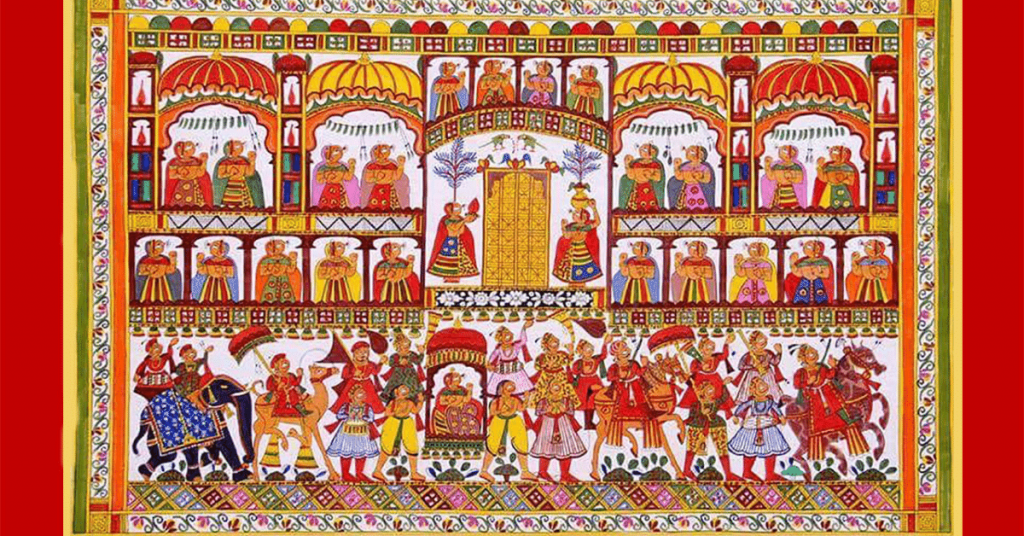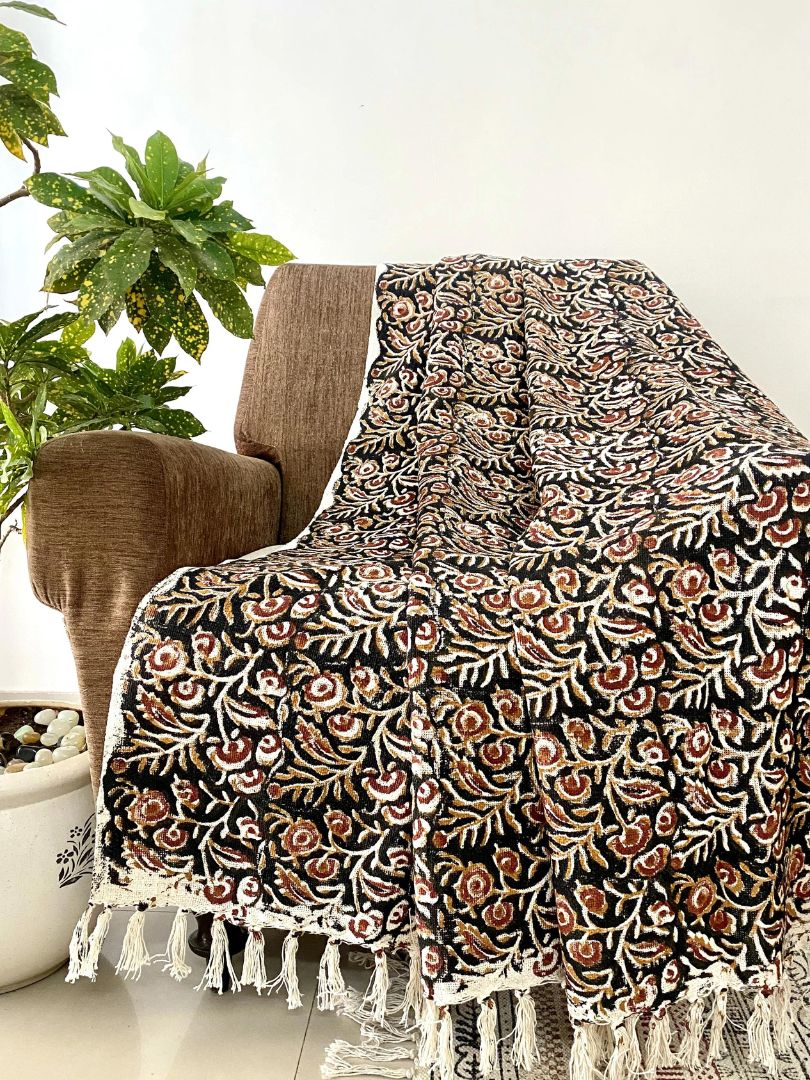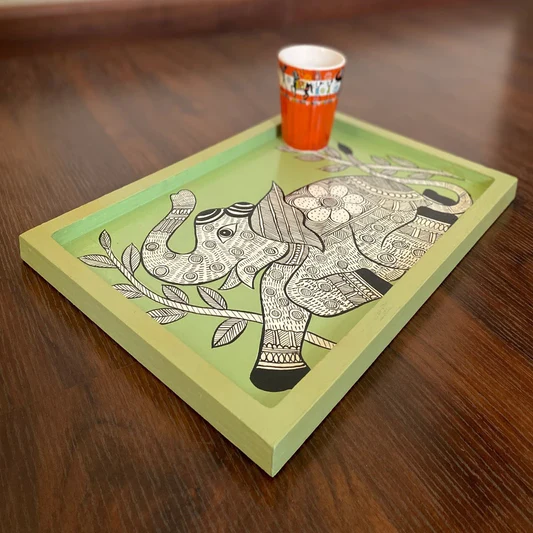Unfolding the Artistic Legacy of Rajasthan

Rajasthan, often called the land of kings, has a rich cultural heritage deeply rooted in art and storytelling. The state’s artistic tradition is a mosaic of visual narratives, vibrant colour schemes, and intricate detailing that dates back several centuries. Folk art in Rajasthan is not merely decorative; it is deeply embedded in the social and religious practices of the region. This blog explores various dimensions of Rajasthan’s folk art legacy, from temple walls and portable shrines to canvas-based expressions, offering a deeper understanding of their symbolism, origins, and evolution.
How Has Rajasthani Art Evolved Over Time?
Rajasthani art has seen a continuous transformation, influenced by dynastic changes, spiritual movements, and socio-political conditions. Initially, wall paintings and temple murals dominated the scene. Over time, the development of portable art forms, like scrolls and painted boxes, began to reflect both public narratives and personal devotion.
Historical texts and archaeological findings reveal that miniature paintings gained prominence during the 16th and 17th centuries, especially under Rajput patronage. While royal workshops produced detailed court scenes, local artisans carried forward traditional folk styles, often inspired by mythological stories and oral traditions. This dual existence of elite and folk art gave Rajasthan a unique visual vocabulary that persists today.
What Role Does Storytelling Play in Rajasthani Art?
One of the core features of Rajasthani art is its narrative nature. Unlike contemporary abstract or decorative styles, most traditional art forms here aim to convey a specific tale or message. This storytelling element can be seen clearly in panel-based artwork, where each section represents a scene or character.
The tradition of oral narration complements the visual. For instance, travelling storytellers would use painted artefacts to support their performances, creating a multi-sensory experience. These artworks often served educational, devotional, or commemorative purposes. In this context, visual elements functioned as mnemonic devices to aid memory and understanding.
A clear example of this narrative depth is the Kaavad Art, a portable wooden shrine painted with episodic scenes from epics and folklore. Each panel is a chapter, unfolded progressively by the performer to reveal a larger story. The structure, material, and painting style together create a cultural object that is both sacred and functional.
What Themes Dominate Rajasthani Folk Art?
Themes in Rajasthani art are predominantly religious, mythological, and naturalistic. Scenes from the Ramayana, Mahabharata, and local folklore appear frequently. However, the themes are not limited to deities and heroes. Nature, animals, and village life also find ample representation, reflecting the intimate relationship between art and daily existence.
Birds, in particular, are a recurring motif. They symbolize freedom, connection with the divine, and the cyclical nature of life. A great example is found in artwork collections titled Bird on Canvas, where avian forms are rendered with regional flair, blending symbolic meaning with aesthetic composition. The detailed feathers, movement lines, and stylised backgrounds often narrate more than what meets the eye.
This thematic diversity ensures that Rajasthani art stays relevant across generations, as it accommodates both divine narratives and ecological consciousness.
How Do Techniques and Materials Reflect Regional Identity?
Rajasthani artists traditionally use locally sourced materials like natural pigments, camel hair brushes, and handmade paper or fabric. The medium often determines the message. For instance, mural painting on temple walls uses bold strokes and earthy colours suitable for large-scale storytelling, while miniature paintings involve fine lines and delicate shading to capture detail.
Wood, cloth, and canvas are equally popular. Each region brings its own visual signature. In Shekhawati, the walls of havelis become canvases, while in Bhilwara and Shahpura, artists use cloth scrolls for narrative painting. These techniques have evolved but retain essential characteristics that signify regional identity.
For example, the flat perspective and frontal depiction in many works are not flaws but intentional features meant to focus the viewer’s attention on symbolic representation rather than realism.
In What Ways Has Digital Access Changed Folk Art?
The digital age has reshaped how traditional art is viewed, bought, and preserved. Artists who once depended on local fairs or word-of-mouth now have online platforms to display their work. This has increased visibility but also brought challenges of authenticity and cultural dilution.
Nevertheless, online access allows a wider audience to explore traditional art forms. One such opportunity is viewing or purchasing Phad Painting Online, where detailed scrolls narrating epic tales can be appreciated by art lovers worldwide. This accessibility supports artisans economically while ensuring that the legacy is not lost to time.
However, online visibility must be matched with efforts to educate the audience about the cultural significance, techniques, and original context of these artworks. Otherwise, they risk becoming mere decorative commodities devoid of their deeper meanings.
Why Is Rajasthani Folk Art Still Relevant Today?
Despite modernity, Rajasthani folk art remains deeply relevant for multiple reasons. First, it serves as a record of collective memory and social values. Second, it continues to inspire contemporary artists and designers. Finally, its sustainability in material and method aligns well with modern ecological concerns.
These traditional forms promote slow creation, community-based learning, and respect for cultural heritage. In a world moving rapidly towards digitisation and mass production, the hand-crafted, storied nature of Rajasthani art offers a meaningful counterpoint.
Moreover, it provides an important space for intergenerational learning. Young artisans working with older family members inherit not only skills but also cultural narratives and ethical values.
How Can One Engage With Rajasthani Art Responsibly?
Engagement with folk art should go beyond admiration. Responsible interaction involves:
-
Learning about the origin and purpose of the art form.
-
Supporting artisans directly, ensuring fair compensation.
-
Avoiding mass-produced imitations that dilute authenticity.
-
Attending workshops or exhibitions, where context is provided.
-
Encouraging documentation and research to preserve techniques and stories.
This kind of engagement ensures that traditional art forms are respected, preserved, and passed on in meaningful ways. It also helps create a sustainable ecosystem for artisans who dedicate their lives to these practices.
What Are the Future Prospects for Rajasthani Art?
Looking ahead, the future of Rajasthani art hinges on three pillars: documentation, education, and innovation. Academic interest is growing, with more institutions incorporating folk art into curriculum and research. This helps formalise and preserve knowledge that was previously oral.
Education also plays a key role. Introducing these art forms to younger audiences through school programs or community initiatives can spark lifelong appreciation and possibly new practitioners.
Innovation, particularly in media and storytelling formats, offers exciting avenues. Animation, virtual exhibitions, and interactive storytelling could bring these age-old traditions into contemporary discourse while retaining their core essence.
Ultimately, Rajasthani art is not just about visual appeal. It’s a window into how people perceive divinity, nature, and community. By continuing to explore, understand, and support these traditions, we ensure that this artistic legacy remains vibrant and meaningful.






